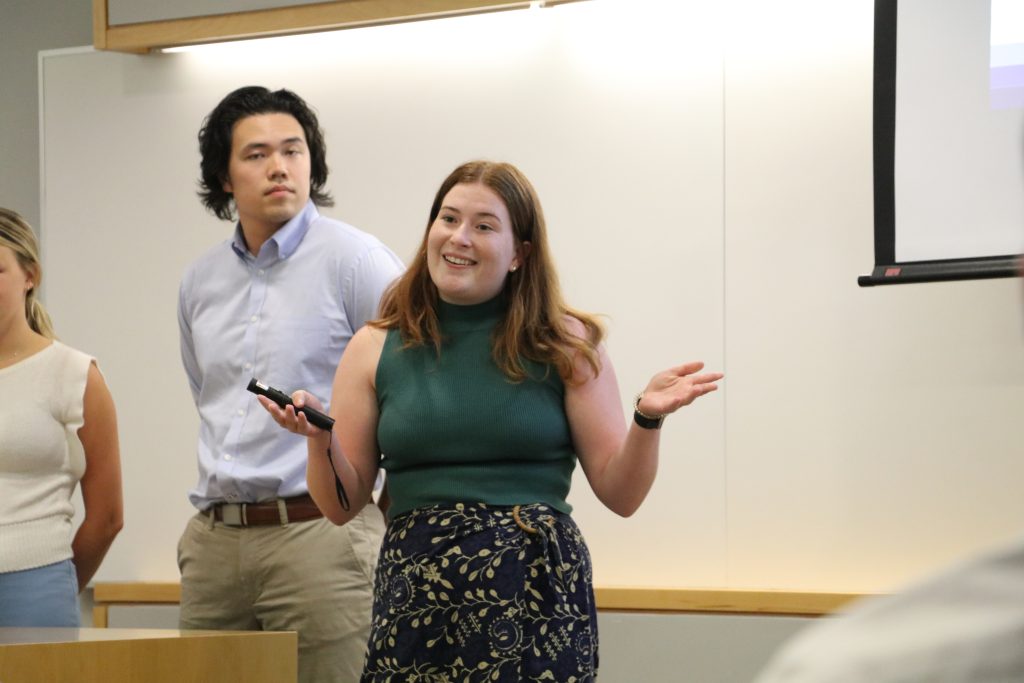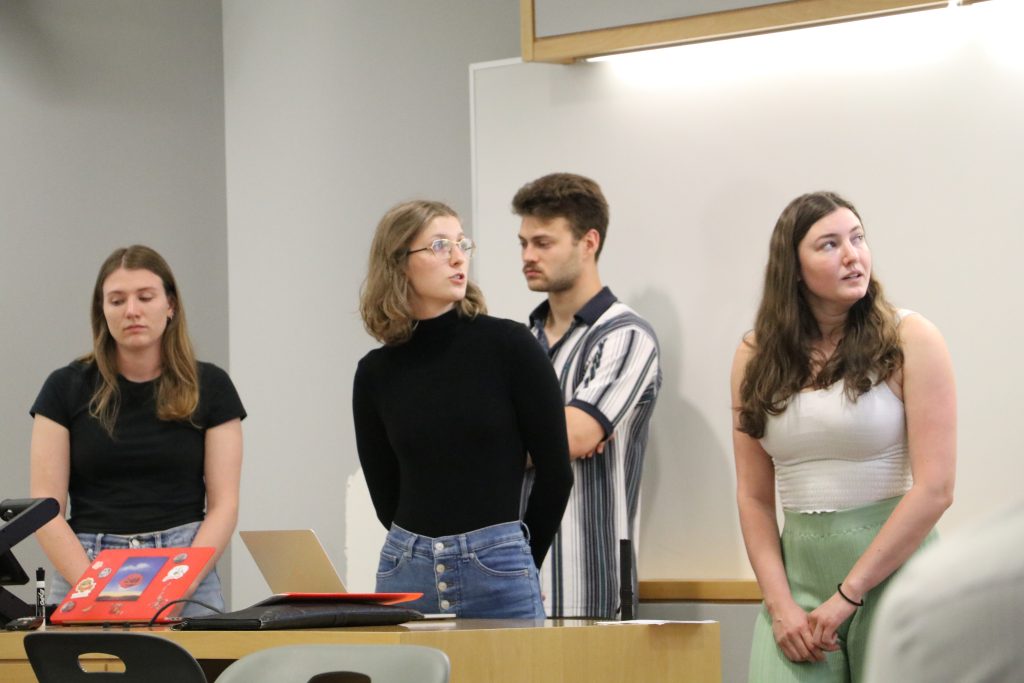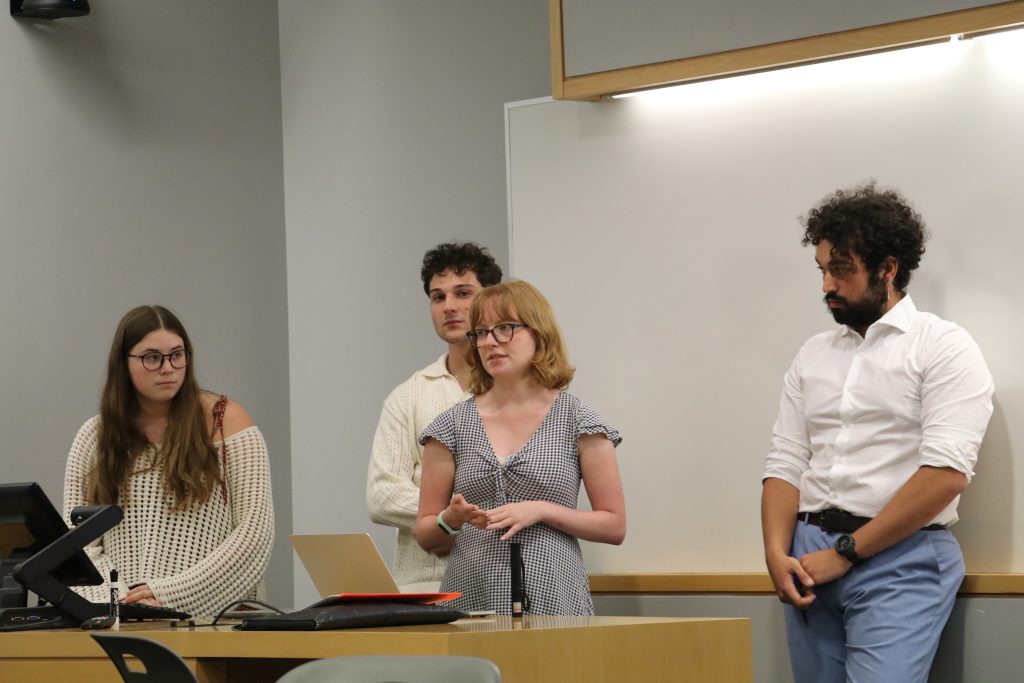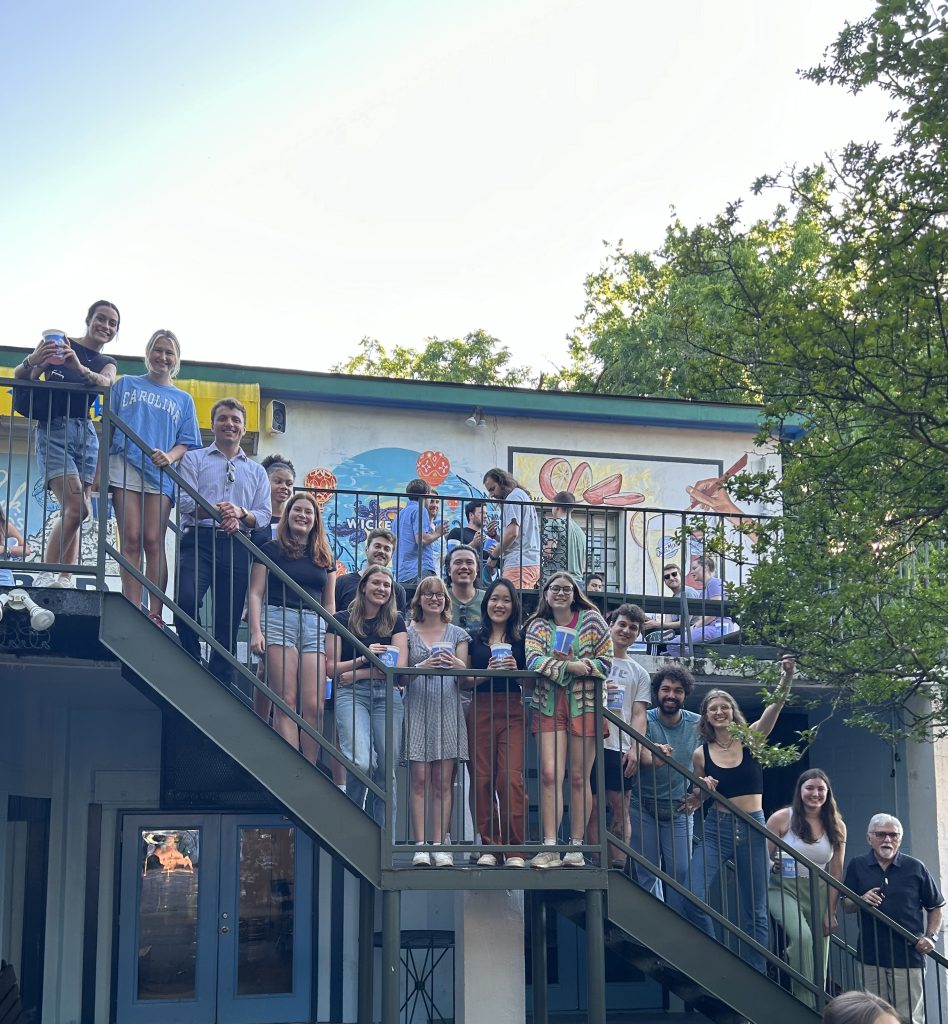Capstone students propose hypothetical small modular reactors to replace fossil fuel power plants in N.C., including one for UNC-Chapel Hill
June 26, 2024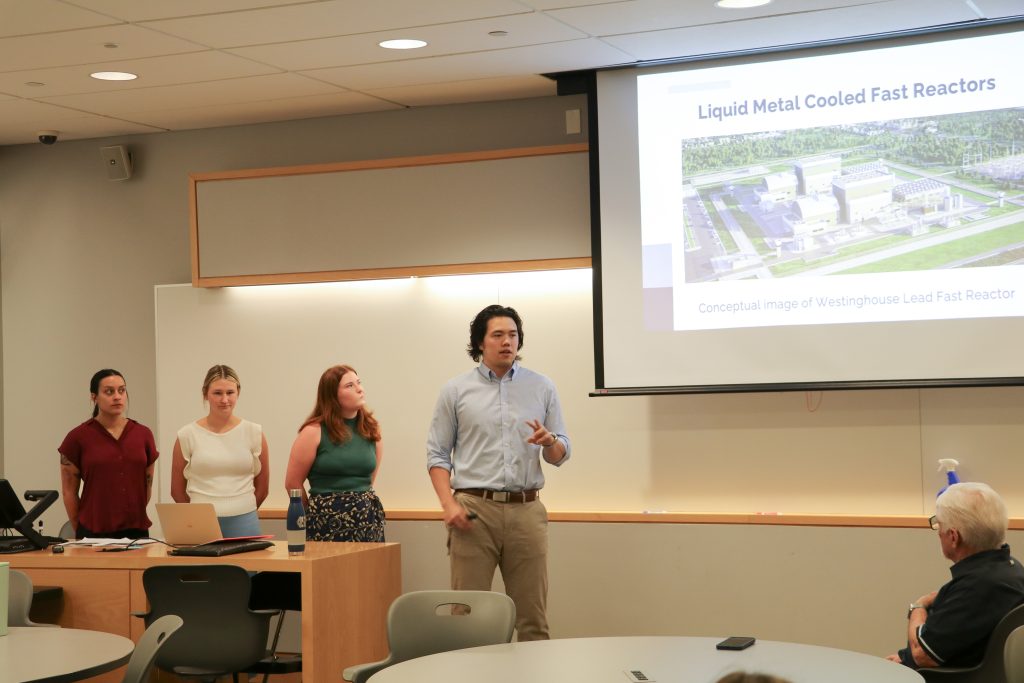
Students in Research Professor Emeritus David McNelis’s Analysis and Solution of Environmental Problems capstone class were divided into four teams, each tasked with creating a proposal to replace a coal or natural gas-fueled power plant with a small modular reactor (SMR) for a real site in North Carolina. SMRs are currently under development in the U.S. and around the world and aim to use advanced technology to offer a smaller footprint, more security and safety features and lower capital investment compared to traditional nuclear power plants.
The students were given parameters, such as the selected SMR should match or exceed the power output of the plant it will replace, be deployable by 2035, be placed underground, provide a base load or load follow, and be walk-away safe, meaning it can shut itself down without human intervention. The proposals were to be responsive to the concerns of the public with respect to safety, nuclear waste, proliferation and cost.
The students spent the semester researching seven different reactors of four different types, including light water (LWR), fast neutron (FNR), molten salt (MSR) and high-temperature gas-cooled (HTGR) and then presented their recommendations in a report and final presentation on Apr. 29.
“After several hours of nuclear applications training, the student teams were effectively on their own in solving their individual task,” said McNelis. “Overall, I was very proud of the student’s performance and am certain that they will share their knowledge-based support for the nuclear industry.”
Team 1: Lake Norman, N.C.
The first team selected a plant on Lake Norman just north of Charlotte, which is one of the largest power plants in the Carolinas and provides power to about two million homes.
“SMRs are more feasible, smaller, and safer than traditional nuclear power,” the team said during its presentation. As North Carolina moves away from its reliance on coal and natural gas, it will be important to use SMRs in conjunction with renewables like wind and solar as we transition into a zero-emissions future.”
The team noted that relying solely on renewable energy sources like solar or wind has its drawbacks, mainly the capacity factor—the wind is not always blowing, and the sun is not always shining. The second biggest drawback is space.
For their proposed power plant, they would need to produce 462 megawatts, which would require 123,000 acres for wind or 5,000 acres for solar. The available acreage for this hypothetical installation is 34 acres.
“Some of the main issues the public has with traditional nuclear technology are safety-related, including meltdowns, proliferation and spent nuclear fuel. With SMRs there are safeguards in place, like siting below ground and walk-away safe that mitigate these concerns,” they said.
They chose the NuScale Voyager 6, a light water reactor, because it met all of the parameters. The biggest drawback is the current estimated cost, which should be reduced as the demand for NuScale systems increases, the team said.
“We believe the NuScale Voyager 6 is perfect for the plant, as it exceeds our requirements and has a viable deployment date. With the installment of this forward-thinking reactor, we can show that nuclear is a viable and practical option for North Carolina’s carbon-neutral future,” they said.
Team 2: Belews Lake, N.C.
The next team picked a plant on Belews Lake in Stokes County, N.C., north of Winston-Salem. The plant is scheduled for retirement in 2035, which is why the team chose this site. Their proposed SMR would need to output 370 megawatts to match the demands of the plant.
The team ultimately chose a Westinghouse lead fast reactor as it met all the parameters for the site and the safety features, which was a top priority for the team. The fast reactor will be more efficient in burning a higher percentage of the fuel, facilitating less waste. They met with a Westinghouse senior engineer who was associated with their fast reactor and who advised the team that as demand increases he expects commercial deployment in the 2030s.
“Our next steps, if this was a real exercise, would be engagement with stakeholders and educating the public. A lot of times when the public hears about nuclear, they think of it as a scary thing or that it is dangerous,” they said.
Team 3: Person County, N.C.
The third group explored an SMR transition for a steam plant in Person County, near the Virginia border. The plant is a coal-fueled facility.
“A concern is public opposition to nuclear which has been plaguing the industry since its inception,” said team three.
The team is hopeful that a new report coming soon from NuScale will help ease concerns about the reactors due to their robust active and passive safety features and the much smaller emergency zone required for their proposed SMR.
Team 4: Chapel Hill, N.C.
The final team explored replacing UNC’s co-generation plant on West Cameron Avenue, near UNC’s campus. Their SMR would need to replace 32 megawatts of electricity and 175 megawatts of thermal from the plant. With this replacement, the SMR would also eliminate UNC’s need to outsource some of the demand to cover UNC’s total energy needs.
“We wanted our reactor to be flexible in order to accommodate the densely populated area of Chapel Hill and have state-of-the-art safety precautions in order to keep our community safe,” they said.
The team chose X-energy’s Xe-100, which uses fuel pebbles the size of billiard balls that protect the uranium inside and contain its byproducts. The fuel pebbles can be used multiple times, and the onboard fuel supply can last for 60 years.
“We thought that the modularity and small size of 13 acres was really ideal for siting in Chapel Hill to maintain a sufficient distance from any population center,” they said.
The team would site the SMR at Horace Williams Airport.
UNC already owns the property and could use existing buildings to house parts of the plant as well as keep the reactor away from the downtown area and consistent from the anticipated 400-meter emergency planning zone, the team explained. They also looked at the existing railroad line that brings coal to UNC’s co-generation plant. The team proposes the purchase of an easement along an edge of the line to transport heat from the proposed SMR to the current co-generation plant to produce the high-temperature steam and distribute it through existing channels.

